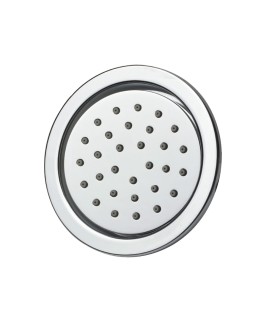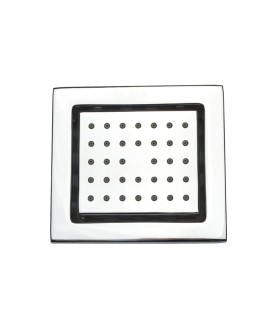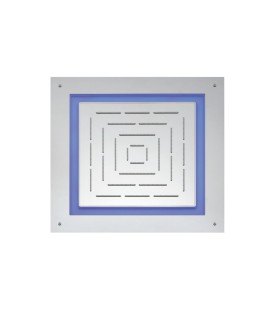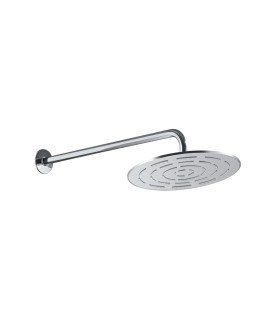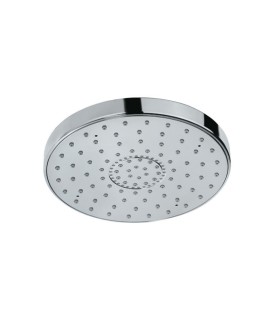Shower Valve Height Guide: What Should Be the Right Placement for Installation?
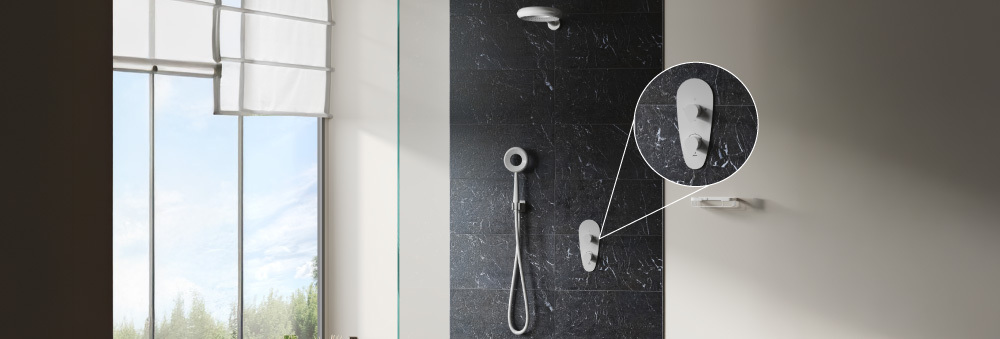
Bathroom fixture placement remains essential during construction and redesign work since it determines comfort while ensuring both beauty and operation. People commonly overlook shower control valve placement but correct installation enhances your showering experience substantially.
Why Is Shower Valve Placement Important?
The shower valve is the heart of your shower system. It regulates water flow and temperature, ensuring a comfortable and safe experience. Improper placement can lead to inconvenience, difficulty in adjustments, or even water wastage. A well-positioned shower valve ensures easy access, enhances functionality, and complements the bathroom’s overall design.
Standard Shower Valve Height
The standard height for installing a concealed shower valve or an exposed one typically ranges between 36 to 48 inches from the floor. However, this can vary depending on individual preferences, family needs, and the type of shower setup you have. For example:
- In a walk-in shower, the valve is usually installed around 40 to 48 inches.
- In a bathtub-shower combination, it’s positioned lower, typically 28 to 36 inches from the floor, to allow for comfortable access while seated in the tub.
Factors to Consider for Shower Valve Height
1. User Preferences
One size doesn’t fit all when it comes to installing mixing valves for showers. Consider the height and accessibility of the users. For families with children or elderly members, ensure the valve is reachable and easy to operate.
2. Shower Type
The type of shower system you choose significantly impacts the valve height:
- Handheld Showers: If paired with a handheld shower, ensure the valve height complements the bracket or sliding rail.
- Rain Showers: For overhead rain showers, the valve should be conveniently placed to control water flow without reaching too high or bending down.
3. Shower Mixer Placement
When installing a shower mixer height, ensure it aligns with other fixtures. The mixer controls should be easy to reach while maintaining a sleek and modern look.
4. Design Aesthetics
A well-placed valve enhances the overall visual appeal of your shower area. Keep the design cohesive by aligning the valve with other elements, such as the showerhead or tiling pattern.
5. Local Building Codes
Always check local building codes or regulations for guidance on proper installation practices. This ensures safety, compliance, and long-term reliability.
Pro Tips for Perfect Valve Placement
- Plan Before Installation: Consult with a professional plumber or contractor to map out the exact placement of the shower valves and other components. This minimizes errors and ensures a hassle-free experience.
- Use Markers: Before drilling or mounting, use temporary markers to visualize the valve’s height and position. Adjust as needed to achieve the perfect placement.
- Test Accessibility: Make sure the valve is easy to reach and operate for all users. If you’re installing a concealed shower valve, ensure the faceplate or lever aligns comfortably with your hand when standing under the shower.
- Future Proofing: Consider potential future needs. If you’re planning to age in place, opt for a height that remains convenient as mobility changes over time.
Common Mistakes to Avoid
- Placing the Valve Too High or Low: This can make it awkward to operate and diminish the overall showering experience.
- Neglecting Water Pressure and Flow: Ensure the mixing valve is compatible with your plumbing system for consistent water pressure and temperature.
- Ignoring Aesthetic Harmony: Misaligned valves can disrupt the visual flow of your bathroom design.
Enhancing Your Shower Experience with Jaquar
At Jaquar, we understand that every detail matters when it comes to creating your dream bathroom. Our range of shower valves, mixers, and other fixtures are designed to provide the perfect blend of functionality and elegance. Whether you’re upgrading your bathroom or starting from scratch, we offer innovative solutions to meet your unique needs.
Conclusion
The right placement of your shower valve can transform your bathroom into a haven of comfort and style. By considering factors like user preferences, shower type, and design aesthetics, you can ensure that your shower setup is both practical and visually appealing. With a focus on precision and quality, Jaquar’s products help you achieve a bathroom that is not only functional but also a reflection of your taste.
Invest in thoughtful planning, and let your bathroom renovation bring you years of relaxation and satisfaction.
FAQs:
Q: What is the standard height for a shower valve installation in the UK?
A: Established height specifications for showers do not exist. Most shower installation guides recommend a height between 36 to 48 inches from floor level yet this measurement can shift based on shower user types and shower designs. You should consider this information foundational but keep in mind that it is not an absolute limit. Consult both an expert plumber and review local regulations before finalising your plans.
Q: Can the height of a shower valve be adjusted during installation?
A: Yes, the height can be adjusted before the final installation. This is why planning and using markers to test the placement are so important. Once it's plumbed in, moving it is a much bigger job.
Q: Should the shower valve height differ for children or accessibility needs?
A: Absolutely. For children or people with mobility issues, the valve should be lower so it's easier to reach and use. Consider everyone who will use the shower when deciding on the height.
Q: What is the recommended shower valve height for a standing shower?
A: For a standing shower (like a walk-in shower), the valve is often installed a bit higher, typically between 40 and 48 inches. Again, this is a guideline, and taller people might prefer it even higher.
Q: How do UK building codes impact shower valve height and placement?
A: UK building codes may have specific rules about where plumbing fixtures, including shower valves, can be placed. It's essential to check these codes before you start any work. They're not just suggestions; they're requirements for safety and compliance. A qualified plumber will be familiar with these regulations.
Stay updated with Jaquar’s latest collections – connect with us on Instagram!

